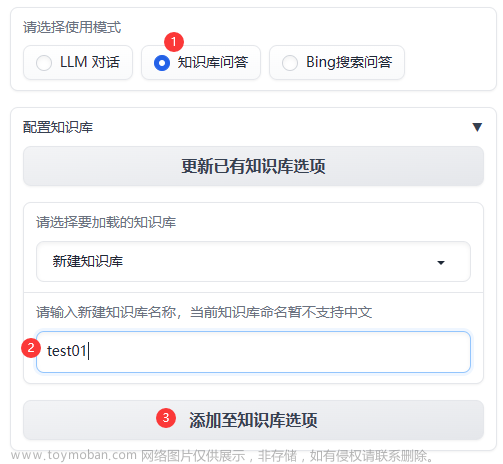
LangChain:Prompt Templates介绍及应用
在自然语言生成任务中,生成高质量的文本是非常困难的,尤其是当需要针对不同的主题、情境、问题或任务进行文本生成时,需要花费大量的时间和精力去设计、调试和优化模型,而这种方式并不是高效的解决方案。因此,Prompt Templates技术应运而生,可以大大降低模型设计、调试和优化的成本。
Prompt Templates是一种可复制的生成Prompt的方式,它包含一个文本字符串,可以接受来自终端用户的一组参数并生成Prompt。Prompt Templates可以包含指令、少量示例和一个向语言模型提出的问题。我们可以使用Prompt Templates技术来指导语言模型生成更高质量的文本,从而更好地完成我们的任务。
在这篇博客中,我们将学习:
什么是Prompt Templates以及为什么需要它
如何创建Prompt Templates
如何传递few-shot examples给Prompt Templates
如何为Prompt Templates选择examples
什么是Prompt Templates?
Prompt Templates是一种可复制的生成Prompt的方式,它包含一个文本字符串,可以接受来自终端用户的一组参数并生成Prompt。Prompt Templates可以包含指令、少量示例和一个向语言模型提出的问题。Prompt Templates可以帮助我们指导语言模型生成更高质量的文本,从而更好地完成我们的任务。
Prompt Templates可以包含以下内容:
Prompt Templates可能包含:
- 对语言模型的指令
- 一组few-shot examples,以帮助语言模型生成更好的响应
- 对语言模型的问题
下面的代码段包含Prompt Template的一个示例:
from langchain import PromptTemplate
from langchain import PromptTemplate
template = """
I want you to act as a naming consultant for new companies.
Here are some examples of good company names:
- search engine, Google
- social media, Facebook
- video sharing, YouTube
The name should be short, catchy and easy to remember.
What is a good name for a company that makes {product}?
"""
prompt = PromptTemplate(
input_variables=["product"],
template=template,
)
创建Prompt Templates
你可以使用PromptTemplate类创建简单的硬编码提示。Prompt Templates可以采用任何数量的输入变量,并且可以进行格式化以生成提示。
from langchain import PromptTemplate
# 没有输入变量的示例prompt
no_input_prompt = PromptTemplate(input_variables=[], template="给我讲个笑话。")
no_input_prompt.format()
# -> "给我讲个笑话。"
# 一个有一个输入变量的示例prompt
one_input_prompt = PromptTemplate(input_variables=["adjective"], template="告诉我一个{adjective}笑话。")
one_input_prompt.format(adjective="好笑的")
# -> "告诉我一个好笑的笑话。"
# 一个有多个输入变量的示例prompt
multiple_input_prompt = PromptTemplate(
input_variables=["adjective", "content"],
template="告诉我一个{adjective}关于{content}的笑话。"
)
multiple_input_prompt.format(adjective="好笑的", content="小鸡")
# -> "告诉我一个好笑的关于小鸡的笑话。"
从LangChainHub加载Prompt Templates
LangChainHub包含了许多可以通过LangChain直接加载的Prompt Templates。
from langchain.prompts import load_prompt
prompt = load_prompt("lc://prompts/conversation/prompt.json")
prompt.format(history="", input="What is 1 + 1?")
传递few-shot examples给Prompt Templates
Few-shot examples是一组可用于帮助语言模型生成更好响应的示例。
要生成具有few-shot examples的prompt,可以使用FewShotPromptTemplate。该类接受一个PromptTemplate和一组few-shot examples。然后,它使用这些few-shot examples格式化prompt模板。
在这个示例中,我们将创建一个用于生成单词反义词的提示。
from langchain import PromptTemplate, FewShotPromptTemplate
# First, create the list of few shot examples.
examples = [
{"word": "happy", "antonym": "sad"},
{"word": "tall", "antonym": "short"},
]
# Next, we specify the template to format the examples we have provided.
# We use the `PromptTemplate` class for this.
example_formatter_template = """
Word: {word}
Antonym: {antonym}\n
"""
example_prompt = PromptTemplate(
input_variables=["word", "antonym"],
template=example_formatter_template,
)
# Finally, we create the `FewShotPromptTemplate` object.
few_shot_prompt = FewShotPromptTemplate(
# These are the examples we want to insert into the prompt.
examples=examples,
# This is how we want to format the examples when we insert them into the prompt.
example_prompt=example_prompt,
# The prefix is some text that goes before the examples in the prompt.
# Usually, this consists of intructions.
prefix="Give the antonym of every input",
# The suffix is some text that goes after the examples in the prompt.
# Usually, this is where the user input will go
suffix="Word: {input}\nAntonym:",
# The input variables are the variables that the overall prompt expects.
input_variables=["input"],
# The example_separator is the string we will use to join the prefix, examples, and suffix together with.
example_separator="\n\n",
)
# We can now generate a prompt using the `format` method.
print(few_shot_prompt.format(input="big"))
# -> Give the antonym of every input
# ->
# -> Word: happy
# -> Antonym: sad
# ->
# -> Word: tall
# -> Antonym: short
# ->
# -> Word: big
# -> Antonym:
为Prompt Templates选择examples
如果你有大量的示例,则可以使用ExampleSelector来选择最有信息量的一些示例,以帮助你生成更可能产生良好响应的提示。
接下来,我们将使用LengthBasedExampleSelector,根据输入的长度选择示例。当你担心构造的提示将超过上下文窗口的长度时,此方法非常有用。对于较长的输入,它会选择包含较少示例的提示,而对于较短的输入,它会选择包含更多示例。文章来源:https://www.toymoban.com/news/detail-464020.html
from langchain.prompts.example_selector import LengthBasedExampleSelector
# These are a lot of examples of a pretend task of creating antonyms.
examples = [
{"word": "happy", "antonym": "sad"},
{"word": "tall", "antonym": "short"},
{"word": "energetic", "antonym": "lethargic"},
{"word": "sunny", "antonym": "gloomy"},
{"word": "windy", "antonym": "calm"},
]
# We'll use the `LengthBasedExampleSelector` to select the examples.
example_selector = LengthBasedExampleSelector(
# These are the examples is has available to choose from.
examples=examples,
# This is the PromptTemplate being used to format the examples.
example_prompt=example_prompt,
# This is the maximum length that the formatted examples should be.
# Length is measured by the get_text_length function below.
max_length=25,
)
# We can now use the `example_selector` to create a `FewShotPromptTemplate`.
dynamic_prompt = FewShotPromptTemplate(
# We provide an ExampleSelector instead of examples.
example_selector=example_selector,
example_prompt=example_prompt,
prefix="Give the antonym of every input",
suffix="Word: {input}\nAntonym:",
input_variables=["input"],
example_separator="\n\n",
)
# We can now generate a prompt using the `format` method.
print(dynamic_prompt.format(input="big"))
# -> Give the antonym of every input
# ->
# -> Word: happy
# -> Antonym: sad
# ->
# -> Word: tall
# -> Antonym: short
# ->
# -> Word: energetic
# -> Antonym: lethargic
# ->
# -> Word: sunny
# -> Antonym: gloomy
# ->
# -> Word: windy
# -> Antonym: calm
# ->
# -> Word: big
# -> Antonym:
相比之下,如果我们提供了一个非常长的输入,则LengthBasedExampleSelector将选择较少的示例包含在提示中。文章来源地址https://www.toymoban.com/news/detail-464020.html
long_string = "big and huge and massive and large and gigantic and tall and much much much much much bigger than everything else"
print(dynamic_prompt.format(input=long_string))
# -> Give the antonym of every input
# -> Word: happy
# -> Antonym: sad
# ->
# -> Word: big and huge and massive and large and gigantic and tall and much much much much much bigger than everything else
# -> Antonym:
到了这里,关于LangChain:Prompt Templates介绍及应用的文章就介绍完了。如果您还想了解更多内容,请在右上角搜索TOY模板网以前的文章或继续浏览下面的相关文章,希望大家以后多多支持TOY模板网!









